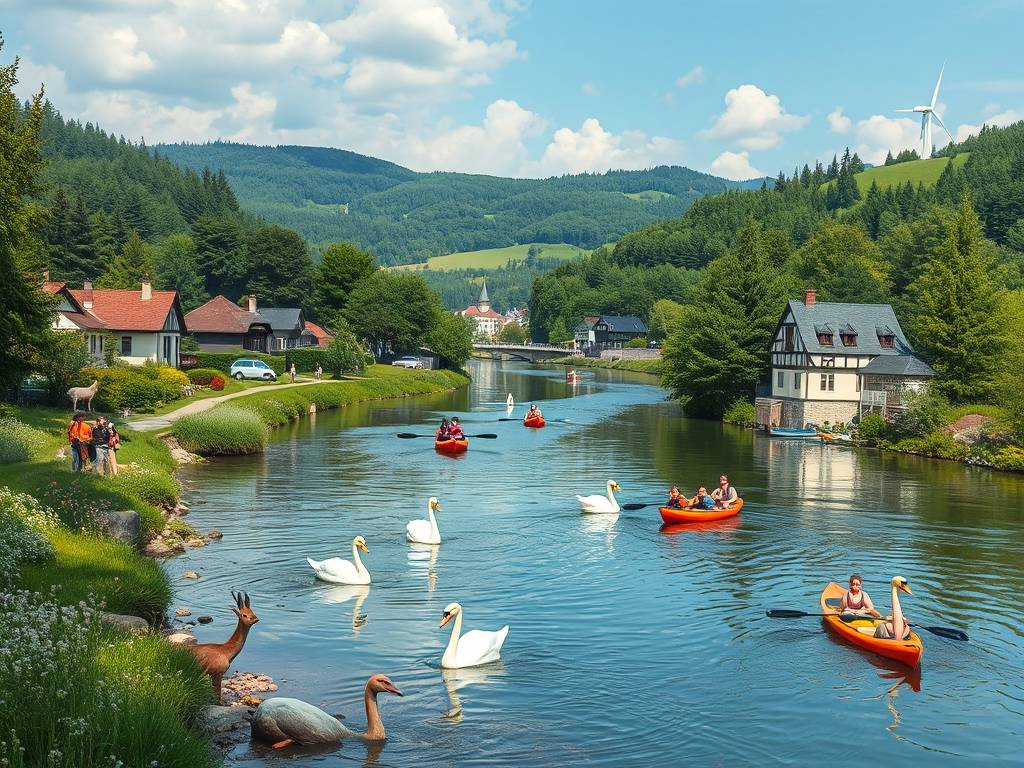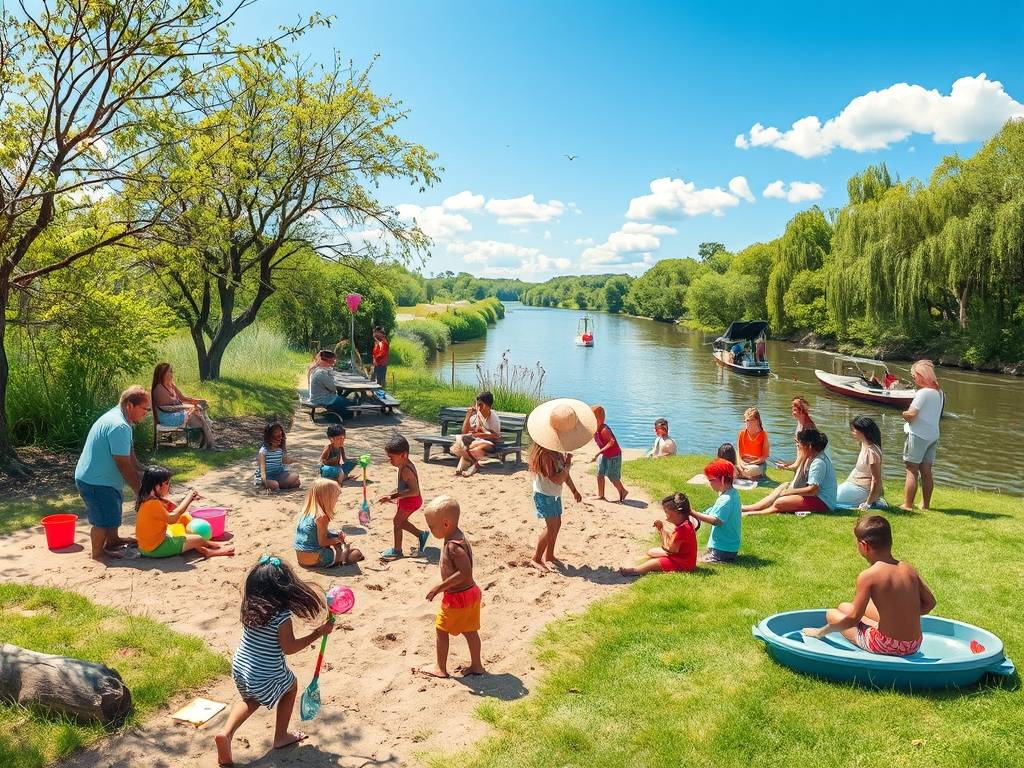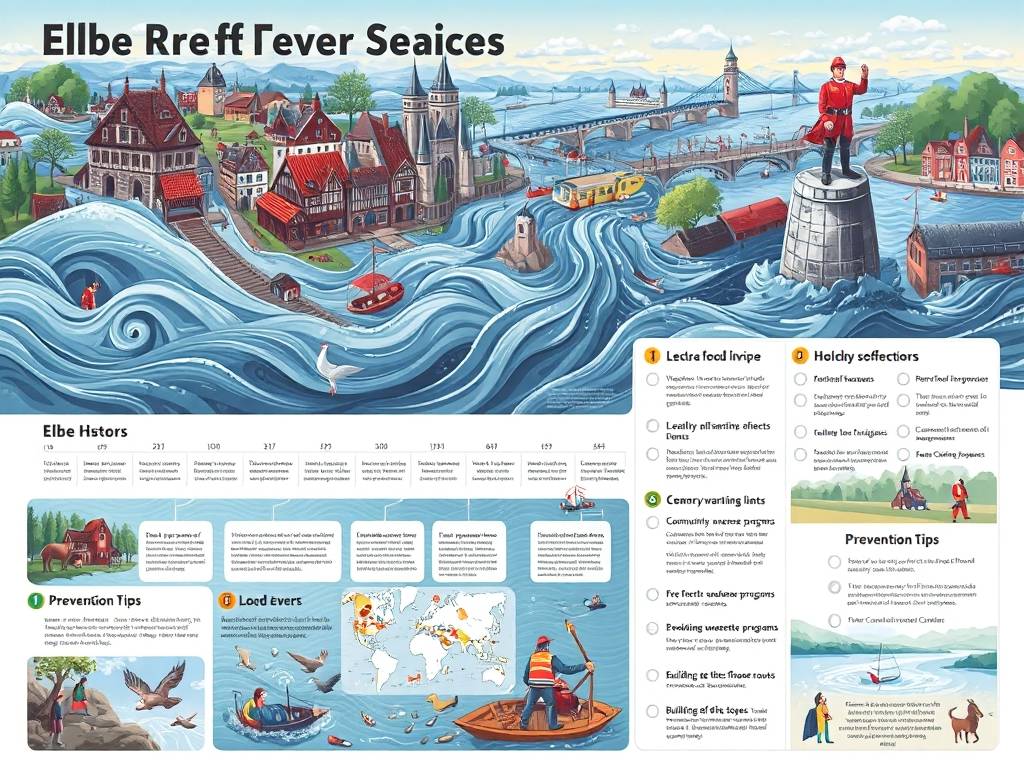Global Travel Information
Elbe River Eco-Tourism: Sustainable Travel Options
Sailing the Elbe: Your Guide to Unforgettable and Sustainable River Adventures
The gentle lapping of water against the hull, the sun casting a golden glow on centuries-old castles, and the serene landscape of vineyards and forests sliding by—this is the magic of a journey along the Elbe River. Stretching from the Czech Republic’s rugged Krkonoše Mountains to the North Sea coast of Germany, the Elbe is more than just a waterway; it's a ribbon of life, history, and culture. In an age where travelers are increasingly conscious of their footprint, the Elbe River presents a unique opportunity for a deeply rewarding eco-tourism experience. This isn't about sacrificing comfort for conscience; it's about enhancing your journey through sustainable travel choices that protect the very beauty you've come to witness.
So, what exactly makes the Elbe a prime destination for the eco-conscious explorer? The answer lies in its inherent nature. River cruising and cycling along its banks are naturally low-impact ways to travel. Unlike air travel or long car journeys, your movement is slow, quiet, and integrated with the environment. The focus shifts from rushing to a destination to immersing yourself in the journey itself. This approach aligns perfectly with the core principles of sustainable tourism: minimizing environmental impact, supporting local economies, and fostering cultural respect. By choosing responsible operators and being mindful of your choices, you become a active participant in conserving the Elbe’s unique ecosystems for future generations.

Embarking on Your Green Journey: Sustainable Travel Options on the Elbe
Your sustainable Elbe adventure can take many beautiful forms. Let's explore the most popular and eco-friendly ways to experience the river.
1. Eco-Conscious River Cruises: Sailing with a Lighter Touch The image of a massive cruise ship might not scream "eco-friendly," but the Elbe river cruise industry has evolved dramatically. The key is to look for smaller, specialized ships designed for this specific river. The Elbe’s unique topography, including its relatively shallow waters in sections, means that large ocean-faring vessels simply cannot navigate it. This has led to the proliferation of smaller, more intimate boats that are inherently more efficient.
When researching your sustainable Elbe river cruise, prioritize companies that are transparent about their green initiatives. Look for vessels equipped with hybrid engines or those that use shore-side power, allowing them to turn off their engines while docked, drastically reducing emissions and noise pollution. Many modern ships also feature advanced waste-water treatment systems, ensuring that nothing harmful is returned to the river. Onboard, you’ll often find a focus on locally sourced organic food, reducing the carbon footprint associated with transportation and supporting regional farmers. This is a perfect example of how your eco-friendly travel on the Elbe directly benefits the communities you visit.
2. The Elbe Cycle Path: A Pedal-Powered Paradise For the ultimate low-impact adventure, the Elbe Cycle Path (Elberadweg) is nothing short of world-class. Consistently ranked among the top long-distance cycling routes in Europe, it follows the river for over 1,200 kilometers from its source to the sea. The path is predominantly flat, well-signposted, and separated from road traffic for most of its length, making it accessible for cyclists of all ages and abilities.
Choosing a cycling holiday along the Elbe River is perhaps the purest form of sustainable travel. Your power is your own, your emissions are zero, and your pace allows for genuine connection. You'll glide through the stunning "Saxon Switzerland" National Park with its dramatic sandstone formations, pass the magnificent Dresden skyline, and wind through the charming vineyards of the Elbe Valley. The infrastructure for cyclists is superb, with numerous eco-friendly hotels and lodgings in the Elbe Biosphere Reserve catering specifically to cyclists. You can opt for self-guided tours, carrying your own luggage or using services that transport it to your next accommodation, allowing you to travel light and carefree. This is a fantastic way to discover hidden gems along the Elbe River that are often missed by faster modes of transport.
3. Green Stays and Local Encounters Where you choose to rest your head at night is a crucial part of the sustainable travel puzzle. Along the Elbe, you’ll find a growing number of accommodations committed to sustainability. Look for certified eco-friendly hotels and lodgings in the Elbe Biosphere Reserve. These establishments often use renewable energy, have robust recycling programs, serve organic and regional cuisine, and are built with sustainable materials.
Beyond hotels, consider agritourism stays on family-run farms or guesthouses in smaller villages. This not only provides a more authentic experience but ensures your money goes directly into the local economy. Engaging with local guides for Elbe River cultural tours is another powerful way to support the community. These guides offer invaluable insights into the region's history, ecology, and culture, stories you might never hear otherwise. Opt for tours that focus on responsible wildlife watching in the Elbe region, where operators adhere to strict guidelines to avoid disturbing native species like beavers, white-tailed eagles, and the diverse stork population.
Must-Visit Sustainable Destinations and Activities
Your journey along the Elbe is dotted with destinations where sustainability and wonder intersect.

-
Saxon Switzerland National Park (Sächsische Schweiz): This is a hiker's and climber's paradise. The park’s management is deeply committed to conservation. Stick to the marked trails to protect fragile root systems, respect wildlife, and consider using the efficient public transport system (like the Kirnitzschtal tram) to access trailheads instead of a private car. This is a prime location for responsible wildlife watching in the Elbe region.
-
The Elbe River Biosphere Reserve: This UNESCO-recognized reserve stretches along the river in northern Germany and is a testament to successful reconciliation between human activity and nature. It’s a landscape of alluvial forests, meadows, and waterways. Explore it by canoe or kayak for a silent, low-impact perspective. Visiting the informative visitor centers will deepen your understanding of the local ecosystems and the conservation efforts in place.
-
Cultural Hubs: Dresden and Meissen: Sustainability also encompasses cultural preservation. The meticulous rebuilding of Dresden’s Frauenkirche is a powerful symbol of resilience. Support this by visiting museums and cultural sites. In Meissen, famous for its porcelain, you can tour the factory and learn about centuries-old craftsmanship, supporting the preservation of this traditional art form by purchasing directly from the source.
-
Lüneburg Heath (Lüneburger Heide): While not directly on the river, this vast heathland is easily accessible from the lower Elbe and offers a different, equally beautiful ecosystem. To protect the delicate heather, private cars are restricted in the core area during the blooming season (August-September). Instead, explore using the designated "Heide-Shuttle" buses, a wonderful example of sustainable visitor management.
Your Role as a Traveler: Practical Tips for a Positive Impact
Being a sustainable traveler on the Elbe is surprisingly easy and immensely rewarding. Here’s how you can make a difference:
- Leave No Trace: This golden rule of the outdoors applies everywhere. Take all your trash with you, and if you see litter, be a hero and pick it up.
- Support the Local Economy: Eat at family-owned restaurants, buy souvenirs from local artisans, and stay in locally run accommodations. Your euros have the power to sustain communities.
- Be Water-Wise: The Elbe is the lifeblood of the region. Use water sparingly in your accommodations, and avoid using harsh chemicals or soaps if swimming in the river.
- Choose Public Transport: Germany and the Czech Republic have excellent, efficient public transportation networks. Use trains and buses to connect between different parts of the river, reducing your carbon footprint significantly.
- Respect Wildlife and Nature: Observe animals from a distance, do not feed them, and avoid disturbing nesting birds, especially during breeding season.
A journey along the Elbe River, when approached with intention and respect, is more than a vacation; it's a statement. It's a choice to travel slowly, to connect deeply, and to leave a positive mark on the places you visit. By embracing the sustainable travel options on the Elbe, you are not just a spectator but a guardian of this incredible landscape. You become part of a story of preservation, ensuring that the gentle flow of the Elbe, its whispering forests, and its historic towns continue to inspire wanderers for many years to come. So pack your reusable water bottle, charge your e-bike, or book that eco-certified cruise—your unforgettable and responsible Elbe adventure awaits.
相关文章
- Elbe River Artistic Heritage: Paintings & Sculptures of the Waterway
- Elbe River Flood History: Past Events & Prevention Tips
- Elbe River Family-Friendly Activities: Fun for Kids
- Elbe River Romantic Getaways: Perfect Dates by the Water
- Elbe River Solo Travel Guide: Tips for Lone Explorers
- Elbe River Food & Drink: Local Cuisine Along the Banks
- Elbe River Wine Regions: Vineyards Near the Waterway
- Elbe River Beer Gardens: Relax with a Pint by the River
- Elbe River Museum Guide: Learn About the River’s History
- Elbe River Boat Rentals: Rent a Kayak or Canoe Today
发表评论
评论列表
- 这篇文章还没有收到评论,赶紧来抢沙发吧~


